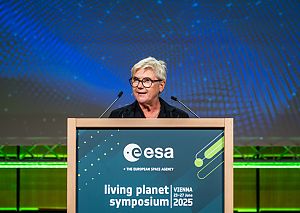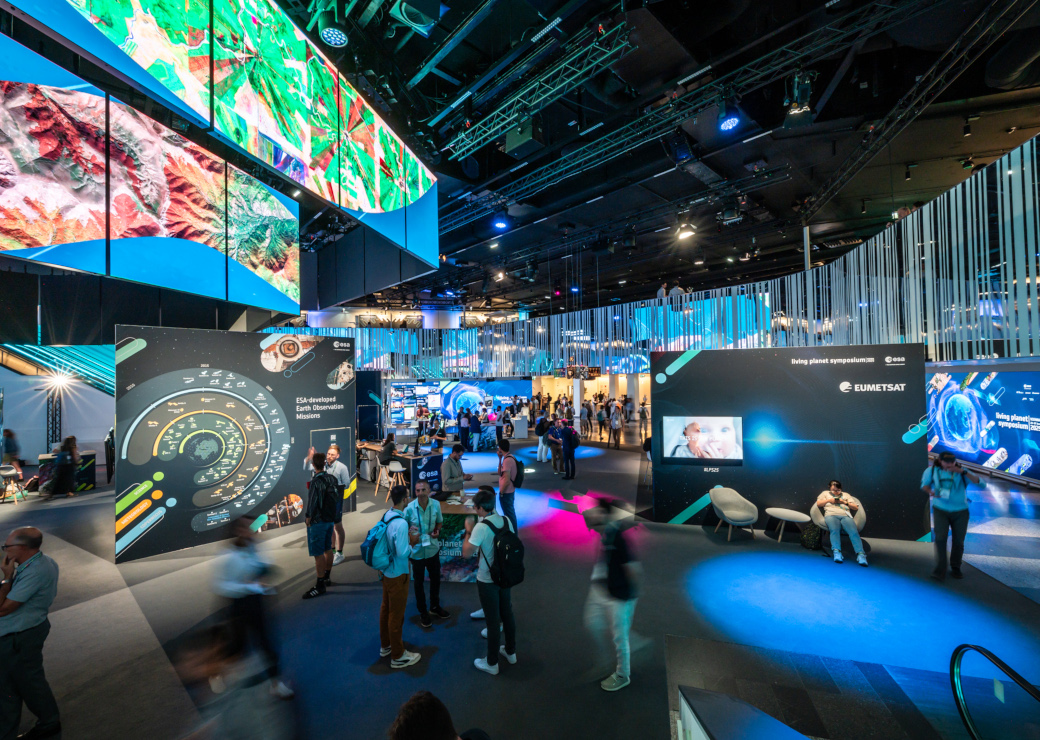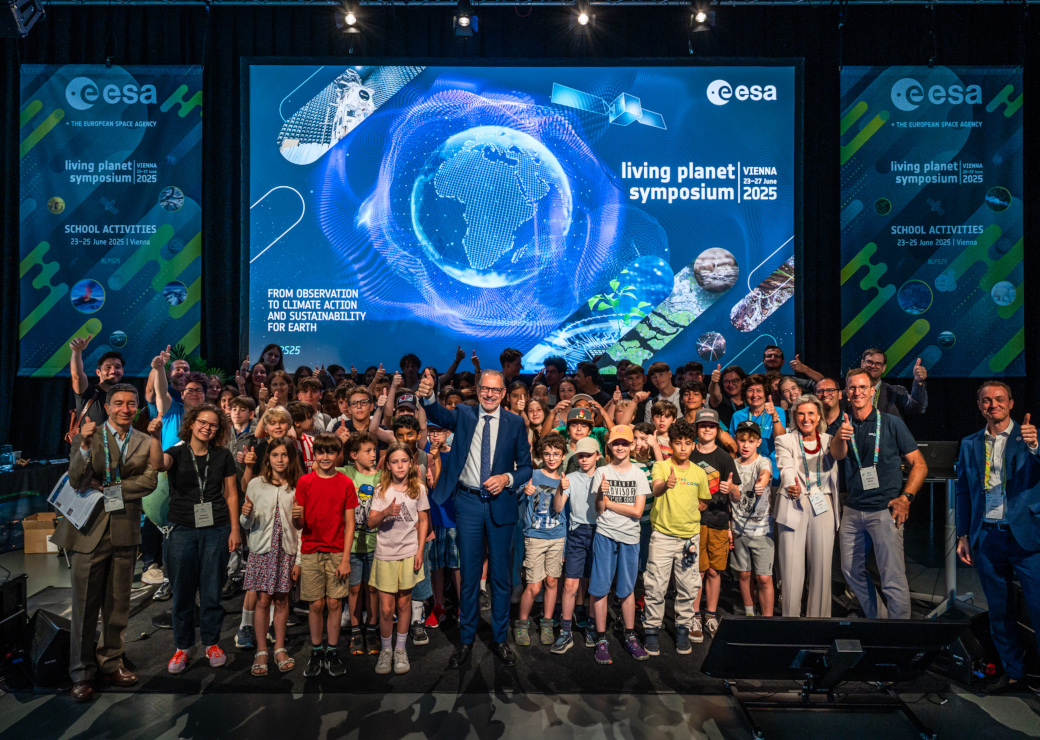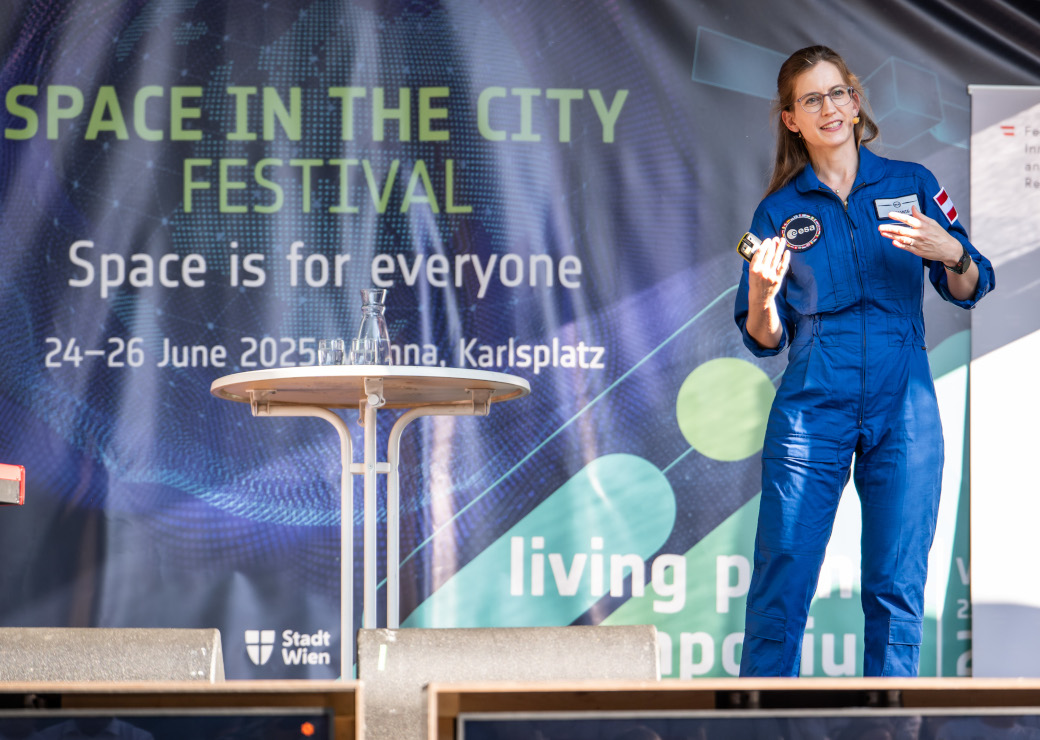The Living Planet Symposium 2025 put Vienna at the heart of the international space community
Vienna, July 9, 2025 – For one week, Vienna became the global capital of space research and Earth observation. The Living Planet Symposium, the European Space Agency's (ESA) largest event on Earth observation held every three years, took place at the Vienna International Center.
While around 5,000 attendees were expected, over 7,000 participants from 120 countries travelled to Austria's capital. In more than 2,000 sessions, agoras, and workshops, they engaged in in-depth discussions about Earth observation, space technologies, and their wide-ranging applications for our planet.
Driving Europe’s Space Ambitions

Under the theme of collaboration between research, policy, and industry, high-level representatives provided valuable insights. Austria's Federal President Alexander Van der Bellen and Space Minister Peter Hanke opened the event with video messages. ESA Director General Josef Aschbacher delivered a keynote address.
Additional contributions came from EU Commissioner for Defence and Space Andrius Kubilius (also via video), Simonetta Cheli, Director of ESA's Earth Observation Program, and Aarti Holla-Maini, Director of the United Nations Office for Outer Space Affairs (UNOOSA), who addressed the audience with a statement. They emphasized the strategic importance of space-based technologies and Earth observation for Europe's climate, environmental, and security policies, highlighting the continent's leading position in this field.
Earth observation is deeply rooted in Austria and plays a central role in many aspects of our daily lives and future planning. We use satellite images and data specifically for sustainable urban planning—for example, to identify heat islands and effectively develop green spaces. This information also supports climate research and environmental monitoring, helping us better understand the impacts of climate change and plan appropriate responses.
The industry was also well represented, with participation from 55 companies and associations. Leading organizations such as Airbus, GMV, Leonardo, and MDA showcased concrete applications of space technologies through exhibition booths, live demos, and interactive sessions.
Many companies offered attendees hands-on experiences—from VR simulations and tutorials on using satellite data to geospatial analysis and digital twins, which could be tested interactively on-site. Austria's space industry was prominently present as well: EOX and EODC had their own booths, while Enpulsion and Gate Space presented their solutions and technologies at the joint booth of the FFG and Austrospace.
The innovation sprint "Satellite Data for Climate-Neutral Cities," organized by the Vienna Geospace Hub, brought together city officials, researchers, and industry representatives. Following an introduction focused on the benefits of Earth observation data, participants collaborated in thematic breakout sessions—covering energy, green spaces, buildings, and mobility—to develop initial solutions for specific urban challenges.
LPS School Lab brought space into the classroom
As part of the symposium, the LPS School Lab offered a large educational program for students. Around 3,000 children and young people from Austria and neighboring countries participated in interactive workshops, exciting science shows, and guided exhibitions. The goal was to teach young people about the importance of Earth observation, climate protection, and space exploration in a playful and hands-on way.
Vienna’s Karlsplatz as the stage for Space in the City
Karlsplatz transformed into a vibrant space festival, featuring keynote speeches from representatives in politics, science, and the ESA. Highlights included a talk by Austrian reserve astronaut Carmen Possnig, a fashion show, space-inspired live music, an open-air cinema, and the SpaceBuzz VR experience, which allowed visitors to embark on a virtual mission into space.
The video is provided via Youtube , a connection to the servers of Youtube is established (see privacy policy).
About the Living Planet Symposium
The Living Planet Symposium is the leading international conference for Earth observation and environmental research, organized by the European Space Agency (ESA). Every three years, the symposium brings together scientists, experts from politics, business and society as well as innovative companies to present and discuss the latest developments, technologies and applications in the field of Earth observation. The aim is to promote global cooperation and strengthen the contribution of space technologies to the protection of our planet.
About Austria in Space
Austria in Space is the central platform for Austria's space activities, supported by the Federal Ministry for Innovation, Mobility, and Technology (BMIMI). It serves as a showcase for the diverse initiatives, institutions, and players within Austria's space sector. Its goal is to promote exchange between science, industry, educational institutions, and the general public. The platform provides comprehensive information on national and international space projects, satellite missions, funding opportunities, as well as educational and career prospects in the space field.



